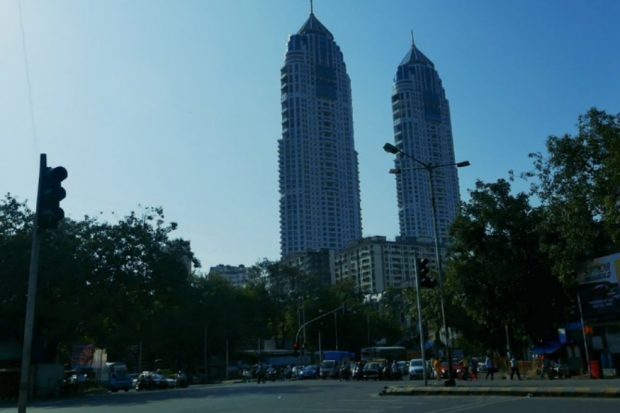
At Rs 56,000 per sq feet, this is India’s costliest residential location in primary market
PTI, Sep 8, 2019, 4:33 PM IST

New Delhi: South Mumbai’s Tardeo is India’s costliest residential location, commanding a staggering Rs 56,000 per sq ft average rate for homes available in the primary real estate market, according to property consultant Anarock.
Worli and Mahalaxmi in Mumbai Metropolitan Region (MMR) are placed at second and third positions with average housing prices of Rs 41,500 and Rs 40,000 per sq ft, respectively.
Anarock has compiled a list of the top 10 most expensive residential locations in India in the primary market that consists of new properties launched by builders and excludes resale ones.
“South Mumbai’s Tardeo is India’s most expensive residential location in the primary residential real estate market. Property here comes with an astronomical price tag of INR 56,200 per sq ft,” Anarock Chairman Anuj Puri said.
Tardeo, also known as Tardeo Road, is a very prominent residential and commercial location in South Mumbai. It enjoys excellent connectivity and is largely self-sufficient with high-grade educational and healthcare institutions as well as hotels and fine dining restaurants available, the report said.
Chennai’s Nungambakkam ranks fourth with an average price of Rs 18,000 per sq ft, while Egmore ranks fifth with Rs 15,100 per sq ft rate. Anna Nagar is at the seventh place with price of Rs 13,000 per sq ft.
Delhi’s Karol Bagh is at the sixth position with average price of Rs 13,500 per sq ft, while the Golf Course Road in Gurugram, Haryana is ranked ninth carrying an average price tag of Rs 12,500 per sq ft.
These two localities in the national capital region (Delhi-NCR) recorded an aggregate supply of 5,630 units since 2013 till date.
Pune’s Koregaon Park ranks eighth on the list, while Alipore in Kolkata comes in at the tenth spot. The average prices for luxury homes in these two micro-markets are Rs 12,500 and Rs 11,800 per sq ft, respectively.
Limited land supply and moderate construction pipelines drive prices high in these locations.
Anarock added that no localities in Bengaluru or Hyderabad figured in the top 10 list.
“Even as India’s middle-class grapples with the prospect of an uncertain future in their careers and financial ability – the main drivers of housing demand – the rise of India’s super-rich continues unabated,” Puri said.
Quoting a Credit Suisse report, the consultant said there were an estimated 3.42 lakh dollar-millionaires in India as on mid-2018 who collectively held around USD 6 trillion. It is forecast that 5.26 lakh Indian dollar millionaires’ wealth will be around USD 8.8 trillion by 2023.
“Market fluctuations make very little difference to the personal net worth of these individuals,” Puri said.
In India, as in the rest of the world, super-luxury housing remains largely insulated from median real estate and economic dynamics, he added.
“Buyers in this housing category, coming from both old’ and new’ money, remain personally wealthy despite ups and downs in their businesses or the economy at large. The country’s most aspirational and expensive locations are their exclusive playgrounds,” Puri concluded.
Udayavani is now on Telegram. Click here to join our channel and stay updated with the latest news.
Top News

Related Articles More

Gold jumps Rs 350 to Rs 79,200 per 10 gm; silver surges Rs 900

Osamu Suzuki, who ignited Indian automobile industry passes away at 94

RBI permits UPI transactions via prepaid payment instruments using third-party apps

Banks can charge over 30% interest on credit card dues: SC

Stock markets settle flat in muted trade; Adani Ports spurts over 5%
MUST WATCH
Latest Additions

Digital payment system to be implemented from April 1 to prevent stamp paper fraud?

‘My mother-in-law must die soon’ message found on note in temple hundi

Kasaragod: Prime suspect arrested in Rs 50 lakh ATM cash van robbery case

Chhetri farewell signals end of an era in forgettable year for Indian football

Coastal Development Authority to be Karavali Development Board from next financial year
Thanks for visiting Udayavani
You seem to have an Ad Blocker on.
To continue reading, please turn it off or whitelist Udayavani.






















